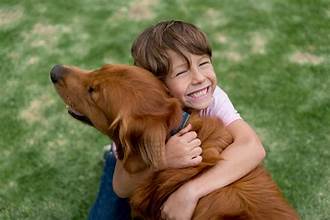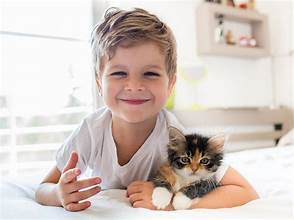Choosing the Right Pet: A Companion for Comfort, Connection, and Growth
For families with children who have special needs, finding the right pet can bring incredible emotional, sensory, and social benefits. Pets can help reduce anxiety, build responsibility, provide comfort during meltdowns, and even serve as a bridge to improved communication and social skills.
But the big question is: What is the best pet for a child with special needs?
The answer depends on your child’s specific needs, sensitivities, and personality.
Let’s explore the most popular and effective options, along with the pros and potential considerations for each.
🐶 1. Dogs – The Most Versatile Companion
Why they’re great:
Dogs are intuitive, loyal, and capable of forming deep emotional bonds. Many children with autism or ADHD find comfort in a dog’s predictable routine and gentle presence. Trained therapy or service dogs can also assist with specific challenges, such as wandering, meltdowns, and anxiety attacks.
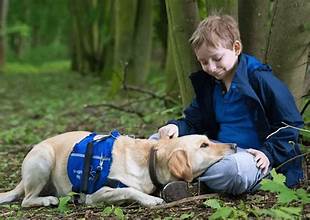
Best for:
- Children with autism spectrum disorder (ASD)
- Kids with anxiety or sensory processing challenges
- Families who are open to daily care routines and training can consider a dog as a pet option. Training is a crucial aspect of dog ownership, as it helps manage the dog’s behavior and ensures a safe and harmonious environment for both the pet and its owner.
Breeds to consider:
Golden Retriever, Labrador Retriever, Cavapoo, Bernedoodle, and other calm, trainable breeds
Things to consider:
- Requires time, space, and structured training
- It may be overwhelming for kids sensitive to noise or movement.
🐱 2. Cats – Gentle, Low-Maintenance Companions
Why they’re great:
Cats offer quiet affection and don’t require the same level of energy or activity as dogs. They’re ideal for children who need a calm, steady presence. A cat’s soft fur and soothing purr can have a calming effect on anxious children.
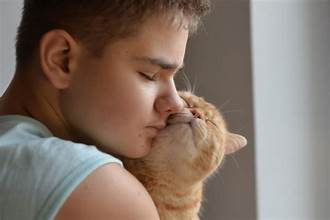
Best for:
- Children who prefer quieter environments
- Kids with sensory needs who enjoy soft textures
- Families in apartments or with limited space
Things to consider:
- Some cats prefer independence, which might not suit a highly social child
- Litter box maintenance is essential for hygiene and routine.
🐰 3. Rabbits – Soft and Soothing Friends
Why they’re great:
Rabbits are gentle, quiet, and love a consistent routine. Their soft fur and calm demeanor make them ideal for children who enjoy tactile stimulation or need a low-energy friend to care for.
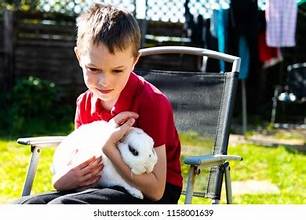
Best for:
- Kids with anxiety or sensory sensitivity
- Children who like to sit quietly and gently interact
- Families can provide a secure, indoor space.
Things to consider:
- Rabbits can be fragile and don’t always enjoy being held
- Daily cleaning and supervised handling are required.d
🐹 4. Guinea Pigs – Small, Social, and Affectionate
Why they’re great:
Guinea pigs are social and vocal, often enjoying human interaction. They’re less fragile than rabbits and can be a great way to introduce responsibility with manageable care needs.
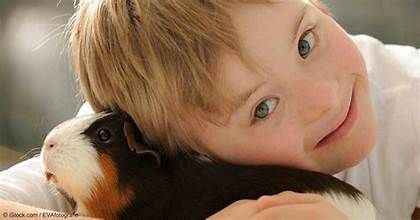
Best for:
- Children who enjoy talking to their pets
- Kids who benefit from short, gentle routines
- Families with limited space or first-time pet owners
Things to consider:
- Needs daily cage cleaning and social interaction
- Sensitive to loud noises and sudden movements
🐢 5. Turtles – Calm and Low-Stress Observers
Why they’re great:
Turtles are non-threatening, require minimal handling, and provide a unique visual connection. Some children find great joy in watching turtles swim or explore their enclosure.
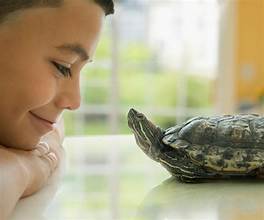
Best for:
- Children with limited motor skills or who prefer observation
- Kids are sensitive to loud or fast-moving animals.
- Families are comfortable maintaining a habitat.
Things to consider:
- Minimal physical affection
- Requires a clean, well-regulated tank with UV lighting
🦜 6. Birds – Bright, Interactive, and Vocal
Why they’re great:
Birds like parakeets or cockatiels can be engaging companions. Their songs and interactions can stimulate communication and sensory engagement.
Best for:
- Children who love sound and conversation
- Kids interested in learning about animal care and behavior
Things to consider:
- Birds can be noisy or messy
- Need daily interaction and a safe space to fly/exercise.
🧠 How to Choose the Right Pet for Your Child
Here are some questions to guide your decision:
✅ Is your child calm or highly active?
Some pets need calm interaction (rabbits), while others can match high energy (dogs).
✅ Is your child sensitive to noise, smells, or textures?
Consider whether your child would enjoy or be overwhelmed by sounds or fur.
✅ Does your child enjoy caring for others?
Some pets offer hands-on care routines that can build confidence and responsibility.
✅ Can your family commit to the pet’s care needs long-term? Owning a pet is a long-term commitment that requires daily care, attention, and love. It’s essential to match your family’s lifestyle with the pet’s requirements and ensure that everyone is on board with the responsibilities involved.
Match your family’s lifestyle with the pet’s requirements.
Final Thoughts: The Right Pet Can Change a Child’s World
There is no one-size-fits-all answer, but the best pet for a child with special needs is one that complements their unique personality, brings comfort, and creates opportunities for growth and connection. By considering your child’s personality, you can make a decision that reassures you and boosts your confidence in your parenting.
Whether it’s a snuggly dog, a quiet rabbit, or a curious cat, the right pet can become more than a companion—it can be a therapeutic part of your child’s daily life.

